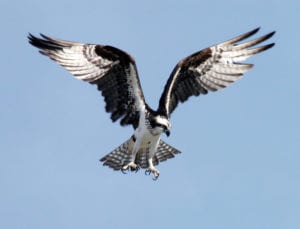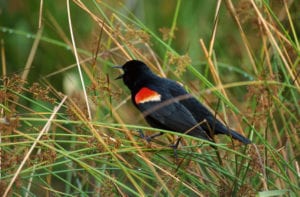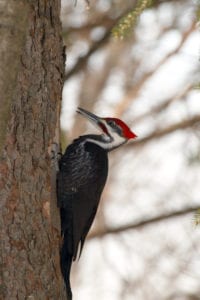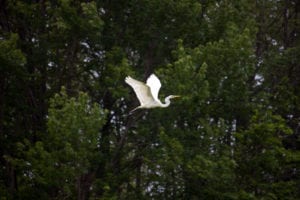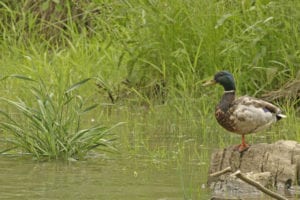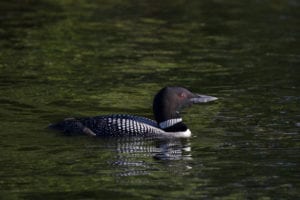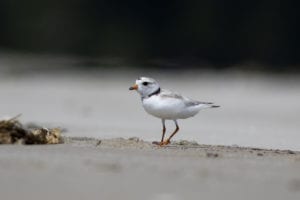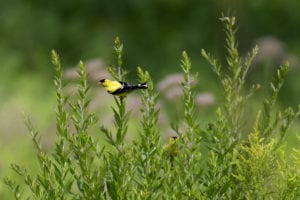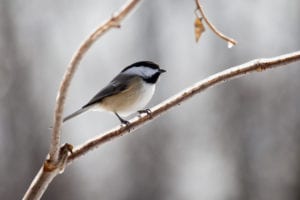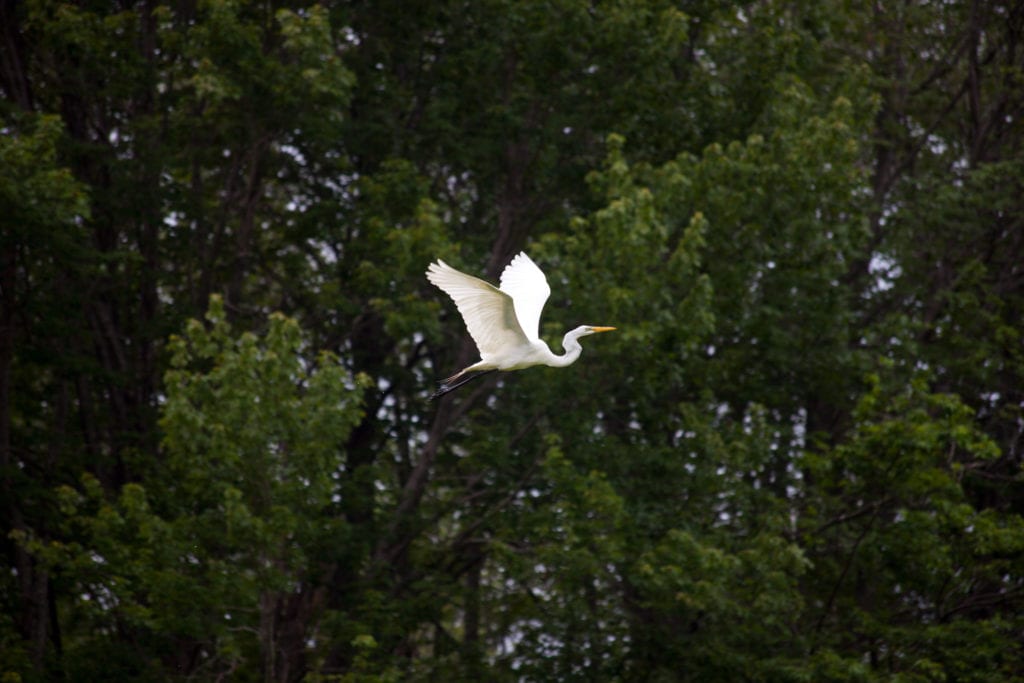
(45 mins – 1+ hr)
What common birds can be found in your area? How can you tune in to who is around and what their songs might mean? What can you notice birds doing right now?
The springtime return of migratory birds, combined with the shift in all bird activity toward claiming territory and finding mates, means we get to hear and see birds more often this time of year. The activities and web resources below will help you get started noticing and learning the birds in your area.
Migratory Bird A Day: Follow along as we celebrate birds returning to Maine, day by day! You can follow along either on our Instagram page or on our website here. We’re posting a picture and information about a migratory Maine bird each day. This is such a great, manageable way to notice the timing of different birds’ return throughout the spring.
Build A Bird Activity: Take a close look at each of these birds. Each has physical adaptations to help them survive and be successful in their habitat. Start by noticing at least 1 special feature on each bird. It could be the webbed feet of the Mallard, the hooked beak of the Osprey, or the bright wing patches on the Red-winged Blackbird. What might those features help the bird do? Are they something that helps the bird move to or live in a particular place, eat a specific food, or avoid being eaten themselves?
Grab a piece of paper (or your nature journal!) and something to draw with. Choosing from the features you notice above, build your own bird! Copy the style of beak from one bird, the body shape/posture of another, and the feet or talons of yet another! Keep going until you’ve made a creative combination of real birds, with many wacky or mixed-up adaptations for survival. Older students might label features as adaptations for particular activities, like “webbed feet to swim” or “hooked beak to tear meat.” All students can add a background that shows the bird’s habitat, color to show their plumage or feathers, and an inventive name. What could you call your bird?
(Don’t worry about your drawing skills. Representing parts of the bird and its adaptations are the important part, so it’s fine if your drawing is simple or cartoony!)
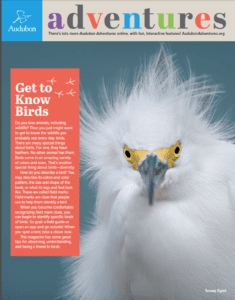 “Get to Know Birds” Article: This excerpt from Audubon Adventures Magazine is a great read to help you start looking for field clues and identifying birds! (2 pages, PDF)
“Get to Know Birds” Article: This excerpt from Audubon Adventures Magazine is a great read to help you start looking for field clues and identifying birds! (2 pages, PDF)
Cornell Lab of Ornithology’s Merlin ID Tool, 5-15 mins
Try out this tool from the Cornell Lab of Ornithology to identify three birds you can see in your yard or neighborhood. If that isn’t possible or you’re not seeing many birds where you live, check out Cornell Lab of Ornithology’s FeederWatch Cam and try identifying birds that visit those feeders! If you scroll down on the FeederWatch page, you’ll find helpful species information about many of the most commonly seen birds in the northeast. Cornell’s All About Birds site is another excellent place to learn more about identifying birds – explore the Bird Guide, which can be organized by the overall shape of birds as an easy place to start. Physical paper field guides work great, too, of course, if you have them at home!
Backyard Bird Songs in March Video, 5 mins
Maine Audubon’s Staff Naturalist, Doug Hitchcox, recently made this amazing video about backyard bird songs. While there are some high-tech representations of sounds, the video is also a great introduction to how to listen to birds. Do you recognize any of the songs or calls Doug mentions? Birding by ear can be overwhelming, so learning the sounds of our common neighborhood birds is a great place to start.
Take your birding to the next level: Record your findings and explore what others are seeing! eBird.org is a real-time, online bird checklist program to report and access information about birds. You can create an organized list of birds seen or heard in your own yard over time, which you could even compare year to year if you keep at it! The “patch” feature of eBird allows you to record and organize your bird sightings from a given area, like those seen on a daily stroll in your neighborhood or from a park nearby. Open a window or step outside to begin your list!
Next Generation Science Standards
“Crosscutting Concepts” for all Elementary Grades in this module:
- Patterns
- Scale, Proportion, and Quantity
- Structure and Function
- Stability and Change
K Performance Expectations:
- Use observations to describe patterns of what plants and animals (including humans) need to survive. K-LS1-1
- Construct an argument supported by evidence for how plants and animals (including humans) can change the environment to meet their needs. K-ESS2-2
1st Grade Performance Expectations:
- Read texts and use media to determine patterns in behavior of parents and offspring that help offspring survive. 1-LS1-2
- Develop a simple sketch, drawing, or physical model to illustrate how the shape of an object helps it function as needed to solve a given problem. K-2-ETS1-2
2nd Grade Performance Expectations:
- Make observations of plants and animals to compare the diversity of life in different habitats. 2-LS4-1
- Develop a simple sketch, drawing, or physical model to illustrate how the shape of an object helps it function as needed to solve a given problem. K-2-ETS1-2
3rd Grade Performance Expectations:
- Construct an argument that some animals form groups that help members survive. 3-LS2-1
- Construct an argument with evidence that in a particular habitat some organisms can survive well, some survive less well, and some cannot survive at all. 3-LS4-3
- Use evidence to construct an explanation for how the variations in characteristics among individuals of the same species may provide advantages in surviving, finding mates, and reproducing. 3-LS4-2
4th Grade Performance Expectations:
- Construct an argument that plants and animals have internal and external structures that function to support survival, growth, behavior, and reproduction. 4-LS1-1
- Use a model to describe that animals receive different types of information through their senses, process the information in their brain, and respond to the information in different ways. 4-LS1-2
NGSS Lead States. (2013). Next Generation Science Standards: For States, By States. Retrieved from http://www.nextgenscience.org/

